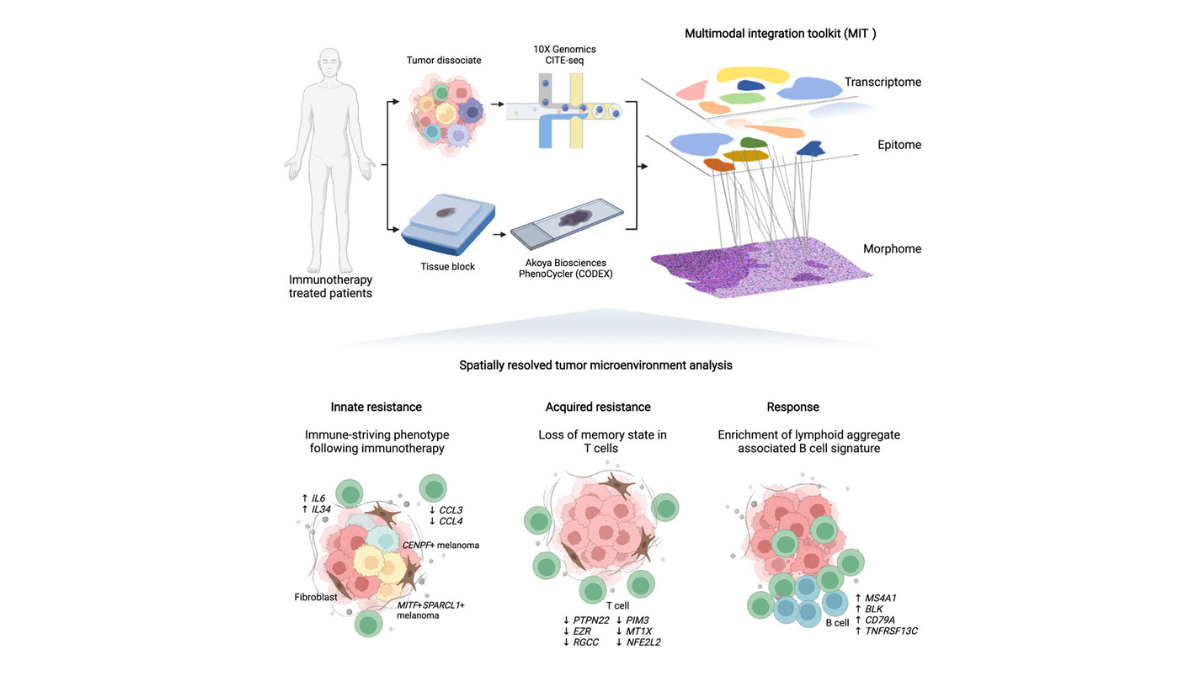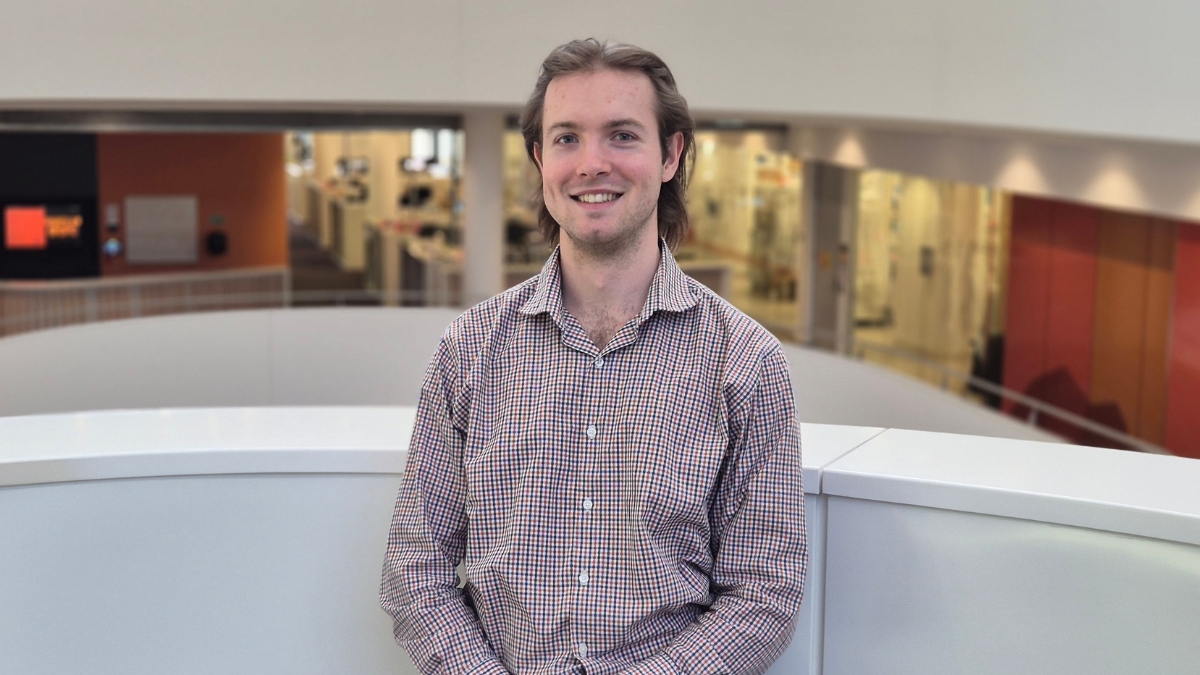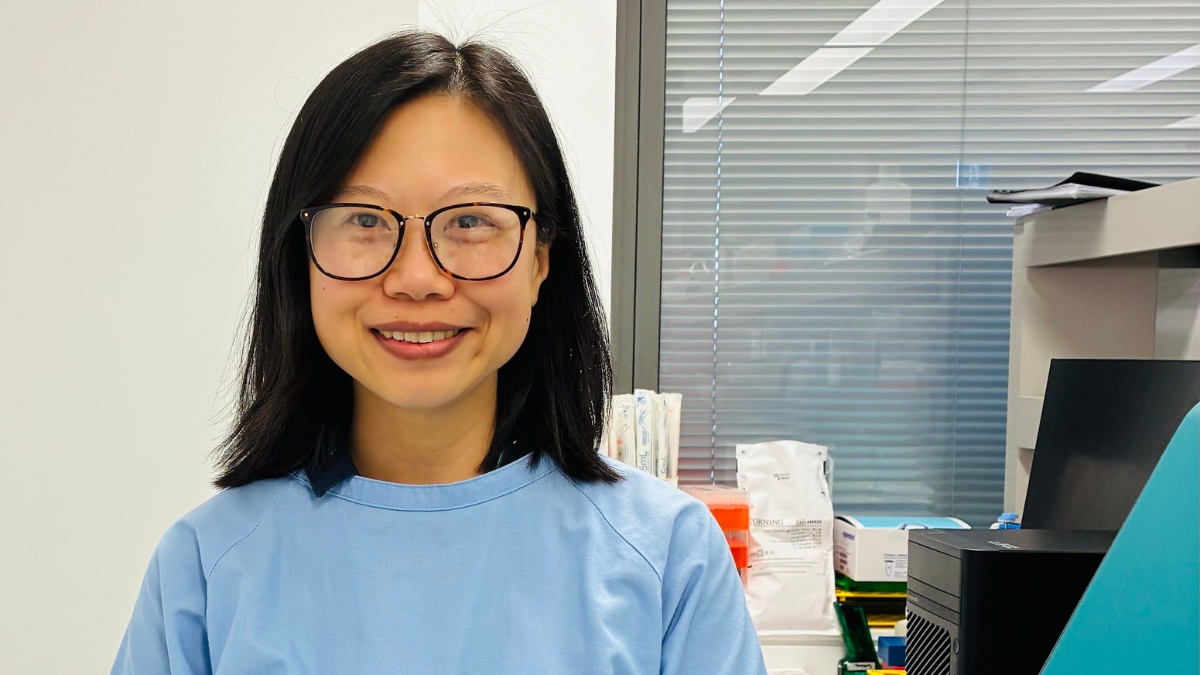Dr Camelia Quek is a Postdoctoral Researcher at Melanoma Institute Australia. Get to know Camelia and her latest work as she answers our questions about her research and personal insights.
Can you summarise your latest research?
The latest research is in a recent paper “Single-cell spatial multiomics reveals tumor microenvironment vulnerabilities in cancer resistance to immunotherapy” published in Cell Reports.
Clinical responses to immunotherapy are not universal. A major challenge in treating melanoma is that a subset of patients with metastatic melanoma is resistant to immunotherapy leading to disease progression and death. This recent study from Melanoma Institute Australia identified a unique immune-striving microenvironment characterised by peri-tumour lymphoid aggregates and low T cell infiltration within the tumour that emerged during therapy. New melanoma subclones expressing MITF+SPARCL1+ and CENPF+ were identified after therapy. The enrichment of B cell-related signatures within lymphoid aggregates was linked to improved patient survival highlighting their potential role in therapeutic strategies.

How did you get into melanoma research?
I am fascinated with the complexity of melanoma and its impact on people’s lives that motivated me to pursue this field. I was particularly drawn to melanoma due to its urgent need for better treatment and knowing that Australia have the highest rate of melanoma when compared to the rest of the world.
What has been the highlight of your career so far?
The highlight of my career has been publishing our work on the discovery of biomarkers and molecularly-informed personalised treatments that enable the advancement of cancer medicine as published in Cancer Cell 2019, Nature Communications 2024 and Cell Reports 2024. It was incredibly rewarding to see my research contributions to both the scientific and clinical communities. For example, my co-first author paper in Cancer Cell 2019 is a landmark study, which discovered new predictive gene expression signatures and two distinct TIL (tumour infiltrating lymphocytes) subtypes associated with response to anti-PD-1 monotherapy and combined anti-PD-1 and anti-CTLA-4 therapy that have higher predictive value compared to the traditional PD-L1 biomarker assay. These discoveries and knowledge have translated into Personalised Immunotherapy Program at MIA.
What is your favourite part of your work?
My favourite part of my work is the discovery process. I love designing experiments, analysing data and uncovering new insights that can potentially lead to breakthroughs in melanoma treatment.
Describe yourself in one word:
Curious.
What’s your favourite quote?
“Your time is limited, don’t waste it living someone else’s life. Don’t be trapped by dogma, which is living the result of other people’s thinking. Don’t let the noise of other’s opinion drowned your own inner voice. And most important, have the courage to follow your heart and intuition, they somehow already know what you truly want to become. Everything else is secondary.” ― Steve Jobs (1955−2011).
What’s your favourite movie?
My all-time favourite movie is GATTACA. I am fascinated by its exploration of genetic engineering and its impact on the society. The movie’s portrayal of a future society where genetic perfection determines one’s place in the world resonates with my interests in biology and the potential implications of our scientific advancements. It’s a thought-provoking story that underscores the importance of human spirit and determination in overcoming genetic limitations.





